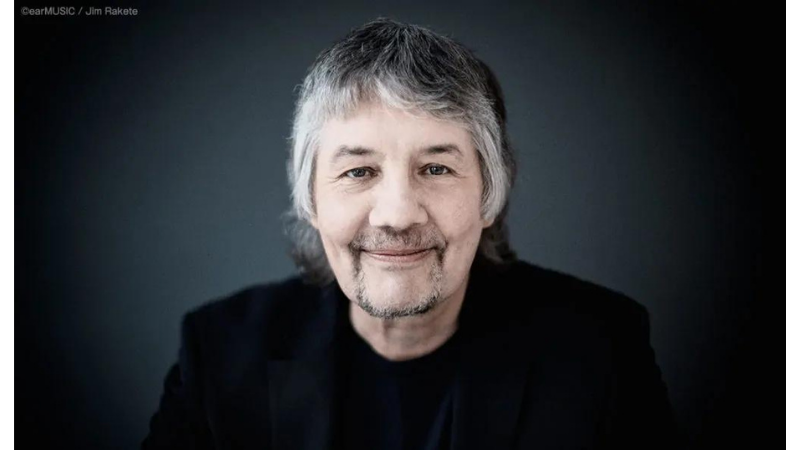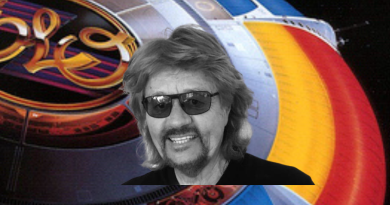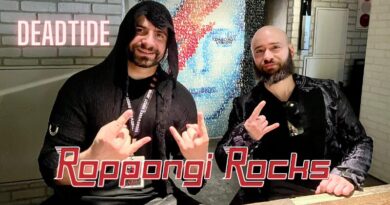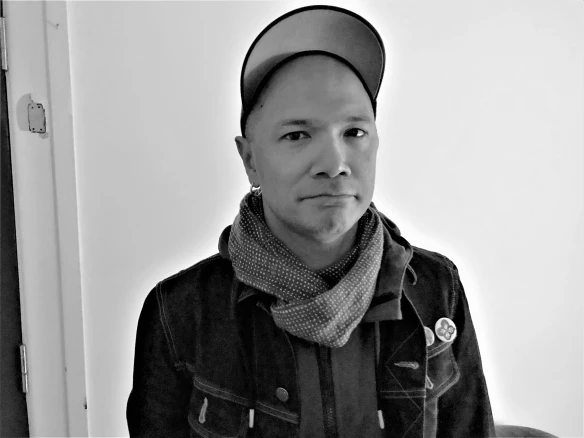Five Records That Changed My Life, Part 44: Don Airey
Deep Purple’s keyboardist Don Airey has during his long career played with everyone, including Black Sabbath, Ozzy Osbourne, Rainbow, Gary Moore, Whitesnake, Judas Priest, Saxon, Jethro Tull, Michael Schenker Group, UFO and many more. Roppongi Rocks’ Stefan Nilsson checked in with Don to find out what five albums made him go “whoosh”.
Charlie Parker “Portrait of the Bird” (1963)
“Brought up in Sunderland, in the industrial north of England in the 50s and 60s, access to music was limited. In 1963 BBC Radio didn’t play much pop, but there was a jazz programme on Wednesday evenings hosted by Gay Byrne featuring half an hour of artists such as Dave Brubeck, Gerry Mulligan, Bill Evans, John Coltrane, Jimmy Smith and Bird himself. I had a valve ‘wireless’ in my bedroom and when Parker played you could almost see the notes streaming out of the speakers. My dad came back from a business trip to London with the LP that included the live September 29th, 1947 Carnegie Hall performance featuring Charlie Parker (alto), Dizzy Gillespie (trumpet), Joe Harris (drums), Al McGibbon (bass) and John Lewis (piano), recorded before tape, on three-minute acetates. The playing is mind-blowing. I recorded Charlie’s four bar break into the solo section of ‘A Night in Tunisia’ on to my Sharp tape recorder, slowed it down, wrote it out and counted 104 notes. The record got played so much that my two brothers and I could sing along with Charlie’s solos – mother thought we’d gone mad – the favourite being ’Dizzy Atmosphere’ which has Dizzy yelling a fusillade of encouragement as Bird takes off into the stratosphere. It was the first album I owned and showed a 14-year-old wannabee what it actually takes to be a musician. Poet Philip Larkin summed it up when he said ‘Charlie Parker was my delight / He breathed in air and breathed out light’.”
Chick Corea “Now He Sings, Now He Sobs” (1968)
“By the time I went to university, I was becoming quite a decent jazz pianist. And then I went to see the Stan Getz quartet in concert at De Montfort Hall, Leicester in 1968. Roy Haynes was on drums, Jimmy Garrison on bass and on piano a young chap from Boston called Chick Corea. A mate said my jaw dropped ‘from Aberdeen to London’ at his playing. Stan played ‘Desafinado’ as an encore, the rest of the show all experimental jazz. Chick did a trio spot playing his composition ‘Steps’. It was jazz Jim, but not as we know it! Saturday following got a train down to London, went to the Record Exchange in Notting Hill and purchased Chick’s debut trio album featuring Roy Haynes and Miroslav Vitous. Caught the train back to Nottingham and played the album and then the battered upright piano in my student flat, to death. Even with the Sharp recorder, never really worked out all Chick’s schtick. When he sadly passed in February this year, I played it again – Chick’s torrent of invention sounding just as wondrously inventive as 50 years ago.”
Mahavishnu Orchestra “Birds of Fire” (1973)
“’Birds of Fire’ came out in 1973. Was familiar with its predecessor ‘The Inner Mounting Flame’, but John McLaughlin raised the bar with this. Amazing harmonies, time signatures, guitar playing and drumming – it rocked – and revealed at the end of the opening title track, the revolutionary sound of keyboardist Jan Hammer’s Minimoog. Bought the album in Miami whilst working the cruise liners and had it on permanent rotation in the cabin. One cruise a passenger actually bought the band a drink. She turned out to be Billy Cobham’s mother-in-law. We told her Billy was the best drummer in the world and she almost fainted. When the cruise contract ended, flew up to Buffalo, New York, took a taxi to the Moog factory in Williamsville, met Bob Moog, purchased a Minimoog from him for $1,000 cash, took it back to London hoping to get into a ‘proper’ band, and practiced. The instrument stayed with me for 20 years, through time served with Cozy Powell, Colosseum II, Rainbow, Ozzy Osbourne, Jethro Tull and Gary Moore. My career might have taken quite a different course but for that album.”
Todd Rundgren “Hermit of Mink Hollow” (1978)
“Released in 1978, the album has an interesting back story. Todd lived in Mink Hollow Lane, Lake View, New York and coped with the fact that his wife and child had just left him by locking himself in his recording studio and making an album – hence the title. He composed the songs and lyrics, played drums, bass, piano, sax, guitar, synths, vocals and BVs, engineered, mixed and presumably made the tea (for one) as well. Some wonderfully sad songs – ‘Can We Still Be Friends’, ‘Bag Lady’, ‘Lucky Guy’, ‘Too Far Gone’, ‘Hurting for You’ – contrast with the up tempo – ‘You Cried Wolf’, ‘Onomatopoeia’ and ‘Fade Away’. Apparently, he’d start by putting the Studer into record, leg it down the stairs to the studio, play the drum-part from memory, then repeat the process gradually adding the other instruments. It’s an astounding tour de force, yet with a down home feel, and shows what can be accomplished if you really put your mind to it……that is if you have a mind like Todd’s!”
Billie Eilish “When We All Fall Asleep, Where Do We Go?” (2019)
“First heard Billie in Nashville in 2019 recording ‘Whoosh!’ with Deep Purple. Music had become something of a chore for us grumpy old rockers. Thrash metal was in the ascendant, and pop music driven by machines, was all talk and no tunes. Ozzy had lately said in an interview what many of us were thinking – music is dead. Sunday off, tuned in to the Billboard top 10 to see what was cooking and heard two beguiling pieces of pop; ‘Old Town Road’ by Lil Naz and ‘Bad Guy’ by Billie. Checked her out when back in the UK when she appeared on the BBC’s Big Day Out Festival and was rather amazed to see the 5,000 teen audience singing their hearts out on every song. Son Colin tried to enlighten me by kindly buying the CD for my birthday. It was only when playing it through my studio system loud that I got it! Little in the way of top end, heavy bass, simple drum machine, deft keyboard touches, minimal reverb, her voice up front, and hook after hook in a succession of beautifully crafted songs. Seven Grammys is not a bad haul for an album recorded in a bedroom and mixed in a front room. Rob Kinelski, the mix engineer, deserves credit. In an interview he stressed that Billie and producer brother Finneas didn’t attend his sessions or attempt to micromanage, and that when he came across the synth break in ‘Bad Guy’, he ‘just sat back and smiled’. Mozart said music should be beautiful. God bless the O’Connell family for bringing so much musical light into the lives of the young generation, and not a few of us oldies as well.”
www.facebook.com/donaireymusic






